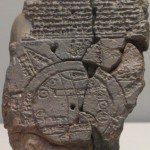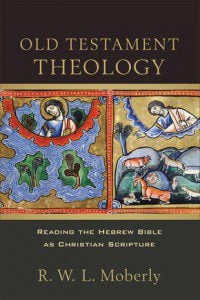How do you read Genesis 32:22-32? Today I want to return to an issue I mentioned in our post about the vigorous conversation over reading the Bible theologically. In that post I mentioned Frances Young’s wonderful book, Brokenness and Blessing: Towards a Biblical Spirituality and in today’s I want to explore how she uses Jacob’s wrestling with God to illustrate how the fathers read the Bible.
First, the text:
22 That night Jacob got up and took his two wives, his two maidservants and his eleven sons and crossed the ford of the Jabbok. 23 After he had sent them across the stream, he sent over all his possessions. 24 So Jacob was left alone, and a man wrestled with him till daybreak. 25 When
the man saw that he could not overpower him, he touched the socket of
Jacob’s hip so that his hip was wrenched as he wrestled with the man. 26 Then the man said, “Let me go, for it is daybreak.” But Jacob replied, “I will not let you go unless you bless me.” 27 The man asked him, “What is your name?” “Jacob,” he answered. 28 Then the man said, “Your name will no longer be Jacob, but Israel, because you have struggled with God and with men and have overcome.” 29 Jacob said, “Please tell me your name.” But he replied, “Why do you ask my name?” Then he blessed him there.30 So Jacob called the place Peniel [“face of God”], saying, “It is because I saw God face to face, and yet my life was spared.” 31 The sun rose above him as he passed Peniel, and he was limping because of his hip. 32 Therefore
to this day the Israelites do not eat the tendon attached to the socket
of the hip, because the socket of Jacob’s hip was touched near the
tendon.
The historical-critical and historical-grammatical method ask questions like these: What were the ancient near eastern parallels and sources for this folkloric story of a human wrestling with a river spirit or a demon or a god or with God himself? What did that text/story mean in its day? What did this story attempt to say about the origins of the name “Jabbok” (the stream), the meaning of “Israel,” the place-name “Peniel,” and the origin of the a good taboo — not eating the thigh muscle of the hip-socket.
How do you read this text? What’s it about? What are your limits? What do you think of the fathers’ readings?
The fathers, however, read the story in other ways. Frances Young illustrates three:
First, some read it as a “theophany” (a manifestation of God — Eusebius) or a “christophany” (a manifestation of Christ – Justin). That is, God appears in human form. In this view, the wrestling disappears and what we hear about is the manifestation of God in human form or the preexistence of Christ.
Second, some find an “exemplary” reading. Clement of Alexandria sees God in this text as the “pedagogue” (instructor) who instructs through the “Word” (Christ). Origen sees here the struggle of humans — not against God but “with” God in order to resist temptation and find moral development. Jerome sees Jacob being strengthened by God and the thigh refers to Jacob’s chastity (asceticism). Augustine said we have to struggle to love our enemy.
Third, there were “dispensational” readings: Jacob is the church and Esau the Jews (according to Augustine).
How about us? Frances Young explains that the story of the text shaped these interpretations: the wrestling, a mysterious Being in human form, and a new name given to Jacob. How about us then?
1. She suggests we see atheism’s and modernity’s struggle with God.
2. She examines religious language and the ‘otherness’ of God.
3. She dips into “creature and creator” — creation giving way to the creator.
4. She discusses spiritual growth occurring through being disabled.











